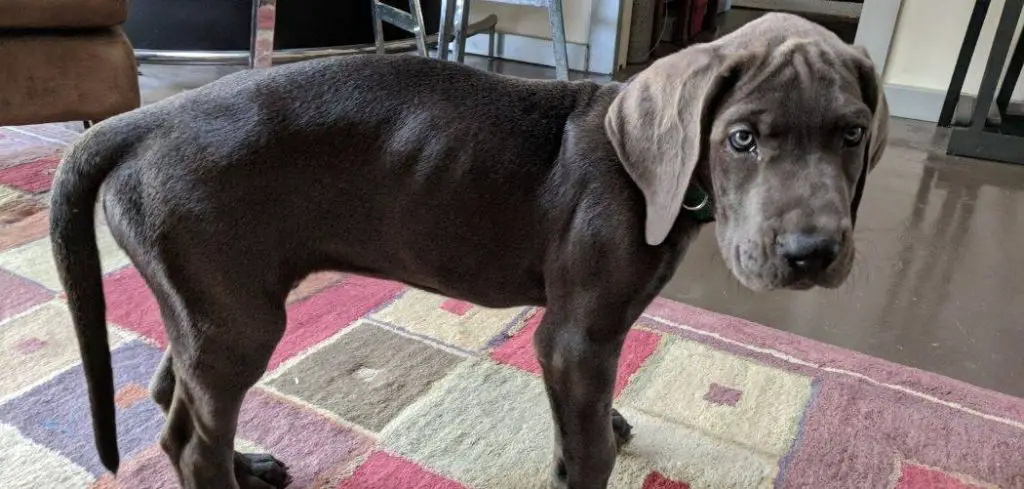It’s unsettling to see your dog pacing restlessly and refusing to eat. These behaviors can be signs of physical discomfort, anxiety, or even something more serious.
We outline the common causes of dog pacing and not eating, what you can do at home, and when to seek veterinary help.
Dog Pacing and Not Eating — Why It Happens
When a dog is pacing and not eating, it usually means they are experiencing discomfort, pain, or stress. This combination of behaviors can stem from gastrointestinal distress, anxiety, pain from injury or illness, or more serious conditions like bloat or neurological disorders.
In some cases, pacing may be a sign of cognitive dysfunction in older dogs, while a sudden loss of appetite can point to infection or organ dysfunction. Identifying the root cause early is crucial to preventing complications.

Common Causes of Dog Pacing and Not Eating
Gastrointestinal Discomfort
Digestive issues like gas buildup, indigestion, or inflammation can make a dog feel unwell, leading them to pace in discomfort.
They may sniff their food or approach it but walk away without eating.
Dogs with upset stomachs often appear restless, sometimes licking their lips or trying to vomit.
If your dog is pacing, has no appetite, and is also burping or vomiting, they may be experiencing gastrointestinal upset.
Read more: Dog Vomiting and Not Eating (What it might mean)
Pain or Injury
Dogs in pain often exhibit restlessness and refuse food.
Pain from arthritis, joint injuries, or internal problems like pancreatitis can make it difficult for a dog to settle down.
Your dog may pace due to discomfort they can’t relieve and avoid eating due to nausea or general malaise.
If this behavior is paired with signs like limping, whining, or a hunched posture, pain is likely a major factor.
Anxiety or Stress
Emotional distress can lead to significant changes in behavior, including pacing and refusing food.
Triggers like loud noises, unfamiliar environments, separation, or recent changes in routine can cause heightened anxiety.
Some dogs may even become hypervigilant and unable to relax enough to eat.
If your dog tends to be nervous or reactive, stress is a likely contributor.
Bloat (Gastric Dilatation-Volvulus)
Bloat is a medical emergency where the stomach fills with gas and can twist, cutting off circulation.
One of the first signs is pacing or restlessness, along with a refusal to eat.
Dogs may also retch unsuccessfully, drool, or show signs of abdominal swelling and pain.
Bloat progresses quickly and can be fatal without immediate veterinary intervention.
Cognitive Dysfunction (in Older Dogs)
Senior dogs may develop canine cognitive dysfunction, a condition similar to dementia in humans.
Pacing and changes in appetite are common behavioral changes linked to this disorder.
Dogs may become confused, forget routines, or lose interest in food despite appearing otherwise healthy.
If your older dog is acting differently, including pacing and not eating, cognitive decline might be a factor.
Neurological Issues
Seizures, brain inflammation, or nerve damage can cause dogs to behave abnormally.
A dog with neurological issues may seem disoriented, pace compulsively, or lose their appetite.
Additional signs may include head tilting, circling, or changes in eye movement.
These conditions require thorough veterinary assessment to diagnose and treat.
What to Do If Your Dog Is Pacing and Not Eating
Start by observing your dog closely. Monitor for other symptoms such as vomiting, diarrhea, panting, drooling, or limping. Take note of how long the behavior lasts and whether it gets worse or improves.
Try to offer a bland, easy-to-digest meal like boiled chicken and rice to entice eating. Make sure fresh water is available at all times.
Create a calm environment to reduce stress. Eliminate loud noises, provide a quiet resting place, and keep your dog near you if they’re anxious.
Check for signs of injury or swelling. Gently feel their abdomen, legs, and back for pain reactions. Avoid forcing any movement if your dog seems uncomfortable.
If the pacing stops but appetite doesn’t return within a day, or if your dog refuses food entirely for more than 24 hours, seek veterinary advice.
When to Call or Visit Your Vet
Contact your vet immediately if your dog is pacing and not eating and:
Shows signs of bloat (swollen belly, unproductive retching, rapid breathing)
Is weak, collapsing, or unable to stand
Is vomiting repeatedly or has bloody diarrhea
Appears disoriented or has neurological signs (circling, head tilt, tremors)
Hasn’t eaten or improved after 24 hours despite home care
Early veterinary attention can prevent conditions from worsening and give your dog the best chance at a full recovery.
Read more: Dog Shaking and Not Eating (Is it pain, stress, or sickness?)
Key Takeaway
If your dog is pacing and not eating, it’s a red flag that something is wrong.
Whether it’s anxiety, pain, or a serious medical issue, don’t ignore these symptoms.
Support your dog at home by creating a calm environment and offering bland food, but seek veterinary care if symptoms persist.
Timely action helps ensure your dog gets the relief and care they need to feel better.
